

The Digital Platform for Energy Leaders
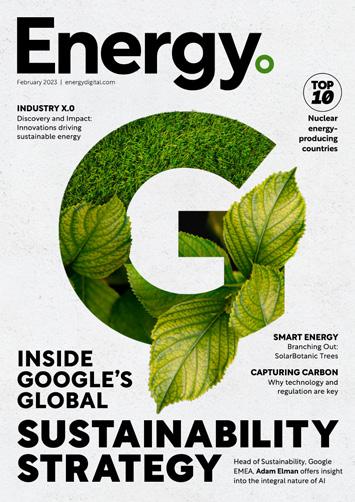
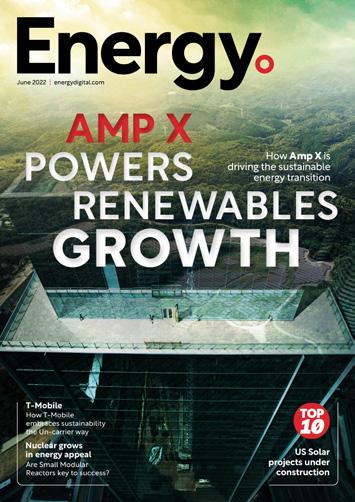

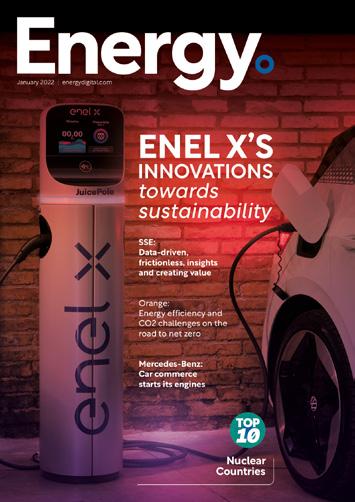



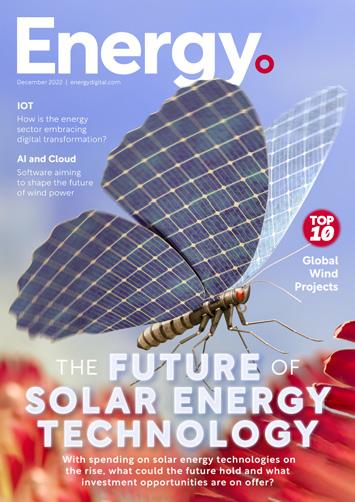










































Ways to Work With us
Energy magazine is an established and trusted voice with an engaged and highly targeted audience of 150,000 global executives


Digital Magazine


Website
Newsletters
Industry Data & Demand Generation

Webinars: Creation & Promotion
White Papers & Research Reports
Lists: Top 10s & Top 100s
Events: Virtual & In-Person
WORK WITH US



The expense of electrification
Electrification is very much in humanity’s hands, but there seems to be an element of the universe throwing barriers in the way.
Of course renewable energy adoption is growing at a necessary rate - it can't evolve fast enough - but the EV sector could take a beating in 2024. The UK Government pushes back the inevitable - much to the industry’s surprise - the European Union is currently set on imposing its 10% tariffs, and will potentially disown new Chinese cars despite the country’s leading market position.

Is there a silver lining though? Will this act enforce the need to localise EV components or perhaps even birth more disclosures among car manufacturers and their supply chains? All we know is that EV imports and exports to and from Europe are about to get more expensive, and China may be hit the hardest.

 TOM SWALLOW
TOM SWALLOW
tom.swallow@bizclikmedia.com

UP FRONT






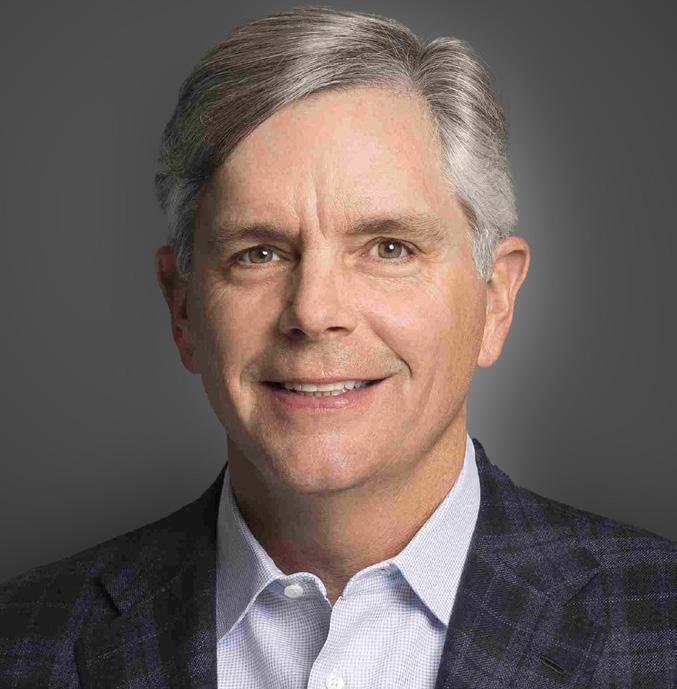














TOM FOLEY
The Executive Director of UK, Europe & Middle East Future Energy at GHD, Tom Foley shares his thoughts on EMEA’s renewable trajectory
While the energy challenge may seem global, there are differentiators between regions as the mentality shifts around electricity and the areas where it is sourced.
While global events have lasting effects on the energy supply chain network, Europe, the Middle East and Africa (EMEA) saw major disruption resulting from a number of events. The response from region to region hinges on their specific needs and the state of geopolitical actions towards renewable development.
EMEA now seems focused on localising the majority of its renewable energy and diversifying with new technologies and solutions that are historically under-utilised. Speaking on this is Tom Foley, the Executive Director of UK, Europe & the Middle East Future Energy at GHD, who explains what the landscape currently looks like and how organisations can respond.
“In terms of the mix, there is a clarion call for the industrialisation
‘bankable’ renewable energy technologies”
TOM FOLEY
TITLE: EXECUTIVE DIRECTOR
COMPANY: GHD
INDUSTRY: CIVIL ENGINEERING
LOCATION: UNITED KINGDOM
Tom Foley is an accomplished figure in the energy and electricity sector, marked by a deep-rooted background and extensive experience. Having transitioned from operational leadership to a strategic role, he spearheaded the formulation of the Future Energy initiative, a strategic growth endeavour that spans Europe, the Middle East, and Africa. Foley’s pivotal role extends to the global leadership team, orchestrating a shift towards capitalising on investment prospects in the energy transition.
Q. TELL US ABOUT GHD AND ITS ACTIVITIES TO DRIVE SUSTAINABLE BUSINESS GROWTH
» We have an ambition to grow our business by supporting our clients as their worlds change. In a nutshell, we are committed to energy, water and communities and the future of those is where we want to carry out our primary business.
The energy transition has really been a test for the region, most notably by the loss of Russian gas and concerns over security of supply. Connected, in part, to that has been the acute issue of energy affordability. And then, with recent reports highlighting concern that we’re just not moving quickly enough, we’ve seen fresh impetus for the introduction of new measures and more visible targets.
GHD is working closely with energy sector clients to develop policy and net zero pathways, engineer new energy infrastructure; and de-risk investment in new technologies that are critical for transition success.
Q. COULD YOU EXPLAIN THE ENERGY CHALLENGES EMEA FACED AND PROVIDE YOUR PERSPECTIVE ON ITS RESPONSE?

» We had a fairly mild winter, and so were saved very much from the full impact of the loss of Russian gas. Although many changes have been implemented, there is still concern around energy security that has polarised the industry. In one respect, it’s really accelerated some investment aimed at exploiting indigenous, renewable resources and, in another, delaying investment until the full effects of the crisis become known.
The energy transition will be very expensive and the market is always looking
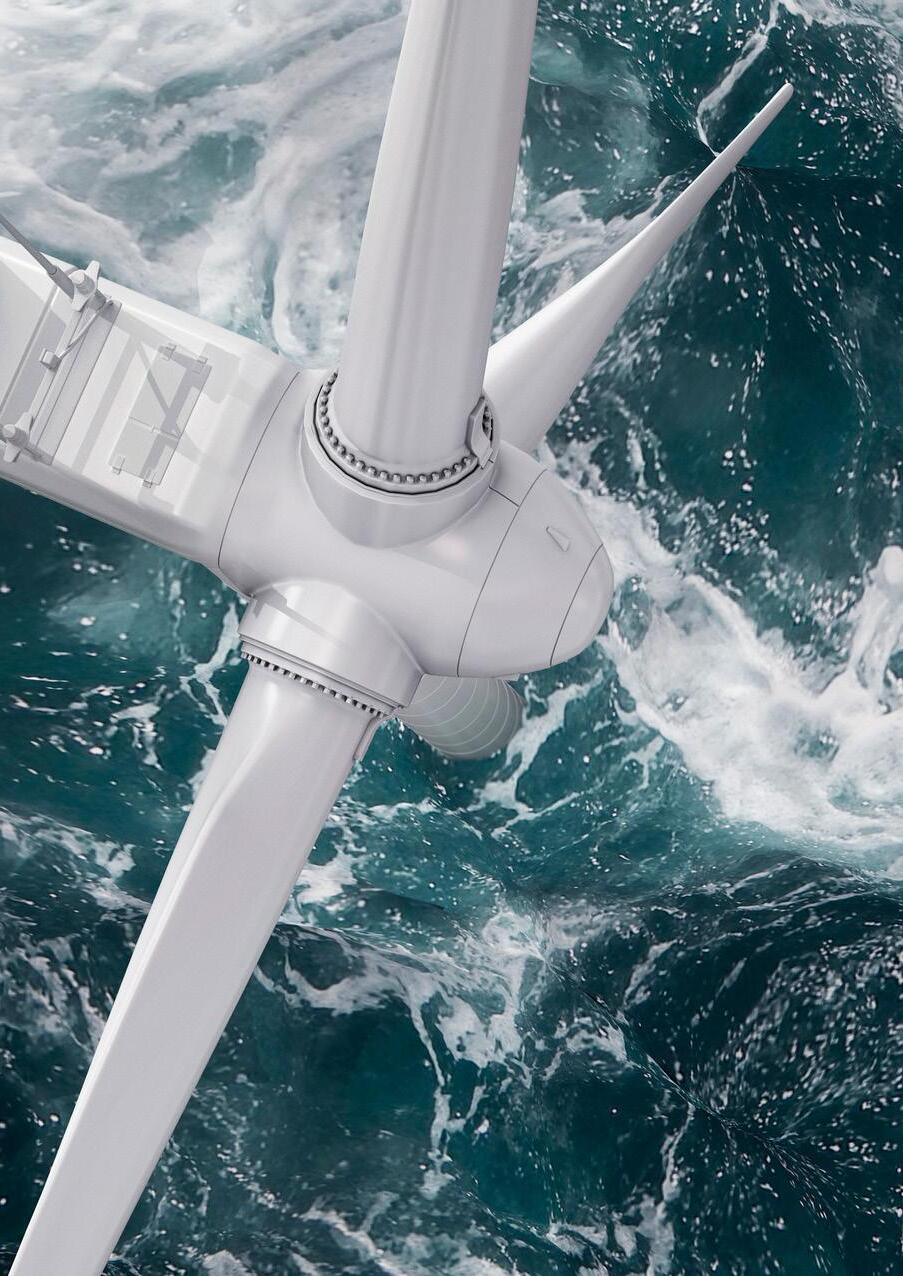
for greater certainty given the scale of investment. One of the things we noted in our recent industry study, Shocked, was a fairly even split between those energy sector senior decision makers believing the energy crisis was an accelerant for the energy transition or not.
Q. WHAT’S YOUR PERSPECTIVE ON RECENT DISRUPTIONS AND WHAT HAVE/CAN BUSINESSES LEARN FROM THEM?
» There was a real step up in volatility in terms of energy prices that were seemingly localised. There have been big changes on a global scale, but more marked in Europe. It really brought home a couple of points: over-reliance on individual suppliers for energy—an example being Russian gas— and stark awareness at the degree of reliance on Chinese supply chains for batteries, solar panels and, more broadly, rare earth minerals.
Disruption has really caused people to look carefully at rebalancing their supply chains and resources.
Diversification is key: steering away from being reliant on just one supply chain; but also looking at what else can be achieved through other means. The volatility in commodity prices has also made people turn to question the financial resilience of the industry.
Q. WHAT FURTHER AREAS ARE DISRUPTING THE ENERGY SECTOR IN ITS TRANSITION TO RENEWABLE ENERGY?
» We are helping companies be more deliberate in their scenario-planning: raising awareness of their reliance on supply chains, certain technologies, resources, perhaps vulnerability to more extreme weather events, which is obviously disconnected from Russian gas.
The focus is more about risk awareness and continually testing lowprobability but high-impact events. There’s a greater need to engineer solutions that are more resilient to extreme weather events. Perhaps needing a higher degree of contingency planning for certain designs and arrangements to maintain integrity through whatever is thrown at our energy systems in the future.
Q. HOW DO YOU EXPECT THE ENERGY LANDSCAPE TO EVOLVE OVER THE NEXT COUPLE OF YEARS?
» In terms of the mix, there is a clarion call for the industrialisation of ‘bankable’ renewable energy technologies. We’ve got ambition to go large in offshore wind and rethink our approach to onshore wind as well. We’ve seen very rapid deployment of PV across Europe and this is set to continue.
I am optimistic about the future energy transition but there are some channel challenges around the industrialisation of and deployment of these renewable technologies, but that will really come down to providing more financial certainty or faster planning processes, rather than the technology itself .
“Diversification means they won’t be reliant on just one supply chain”
LAWRENCE CULP, JR.


The Chairman and CEO of GE, and CEO of GE Aerospace, is a process-driven leader who holds lean principles close
In the advent of climate change, there are few organisations that have provided such influential activities as General Electric with a foothold in one of the highest growth trends of our time. This is all in the name of sustainability and at the helm of the organisation is its Chairman and CEO Larry Culp Jr.
He’s the 12th CEO and 11th Chairman to grace the organisation, which is somewhat testament to the company’s historical presence in the energy sector since 1892. Having joined the company’s Board of Directors in April 2018, Culp Jr is now leading the charge at a critical point for its industries, namely aircraft engineering and wind energy deployment.
His career journey is marked by some major achievements and results that reflect his strategic leadership. In 1990, Culp Jr joined Danaher and quickly took up the position of President in 1993. Following this he climbed a tier to become its Group Executive and Corporate Officer in 1995, making him responsible for its Environmental and Electronic Test and Measurement platforms.
By 1999, Culp Jr’s contributions were further recognised with his promotion to Executive Vice President at Danaher. His strategic insight and operational acumen were becoming increasingly apparent to the company, setting the stage for even greater achievements.
The beginning of his C-Level duties
His ascent reached new heights a couple of years later as he assumed the role of Chief Operating Officer at the company.
This appointment was a testament to his leadership prowess and his ability to navigate complex challenges while driving growth.
The pinnacle of his career at Danaher came in the same year, when he was named President and CEO. Under his guidance, the company achieved remarkable milestones, including an impressive five-fold increase in both revenue and market capitalization. His leadership consistently garnered praise from investors and analysts, solidifying his reputation as a top-tier CEO.
In the current chapter of his career, the journey continues in the energy realm
LAWRENCE CULP, JR.
TITLE: CHAIRMAN AND CEO
COMPANY: GENERAL ELECTRIC INDUSTRY: AVIATION AND AEROSPACE
LOCATION: UNITED STATES
Born on August 17, 1963, Larry Culp Jr gained recognition as the CEO and Chair of General Electric (GE) in 2018. Culp is celebrated for his strategic restructuring efforts to address GE’s financial struggles. His extensive experience includes successful stints at Danaher Corporation, where he significantly elevated its growth.
Culp’s pragmatic approach, adaptability, and emphasis on transparency have revitalised GE’s outlook, showcasing his ability to navigate complex challenges and instil renewed confidence in the company’s trajectory.
as he leads GE in supporting some of the most crucial wind energy developments of the 21st Century. He assumed leadership at a pivotal time, advocating for lean practices and customer-centric approaches. His strategic realignment of the company’s business portfolio, including divestitures and mergers, showcased his ability to drive transformation on a grand scale.
As a fairly fresh face in the energy industry and a CEO with a focus on sustainable principles across the board, Culp Jr brings a new outlook as the company focuses on decarbonisation through renewable energy and hybridised systems for aviation to reduce dependence on fossil fuels across global segments.
Educational pursuits and influences

For this man, it’s about more than just serving the businesses that he works for as
he appreciates the need for extra curricular action to accelerate business transition and drive a new era of knowledge in GE.
Culp Jr’s influence extended beyond the corporate world. He shared his expertise as a Senior Lecturer at Harvard Business School, where he imparted valuable insights on leadership, strategy, and general management to MBA and executive education students.
In May 2023, he was the keynote speaker for the Wake Forest school of Business graduate ceremony where he offered big ideas to the graduants, and he takes great pride in being an influential person in their career journeys.
Much of what he preached at the ceremony can be applied to a number of aspects within the corporate world, and they all relate to the impending concerns of efficiency and modern influences on personal productivity.
Business exists to serve the customer
GENERAL ELECTRIC
General Electric (GE), founded by Thomas Edison, is an iconic American conglomerate. Historically known for its innovations in lighting, power, and appliances, GE has expanded into aviation, healthcare, and renewable energy. Despite challenges, its legacy endures, symbolising a blend of technological prowess and industrial evolution over more than a century.
“Business can be overrun by unnecessary meetings, platitudes and bureaucracy and other forms of nonsense and waste. Know the difference between substance and superficiality and steer towards the former,” he said when reflecting on his speech.
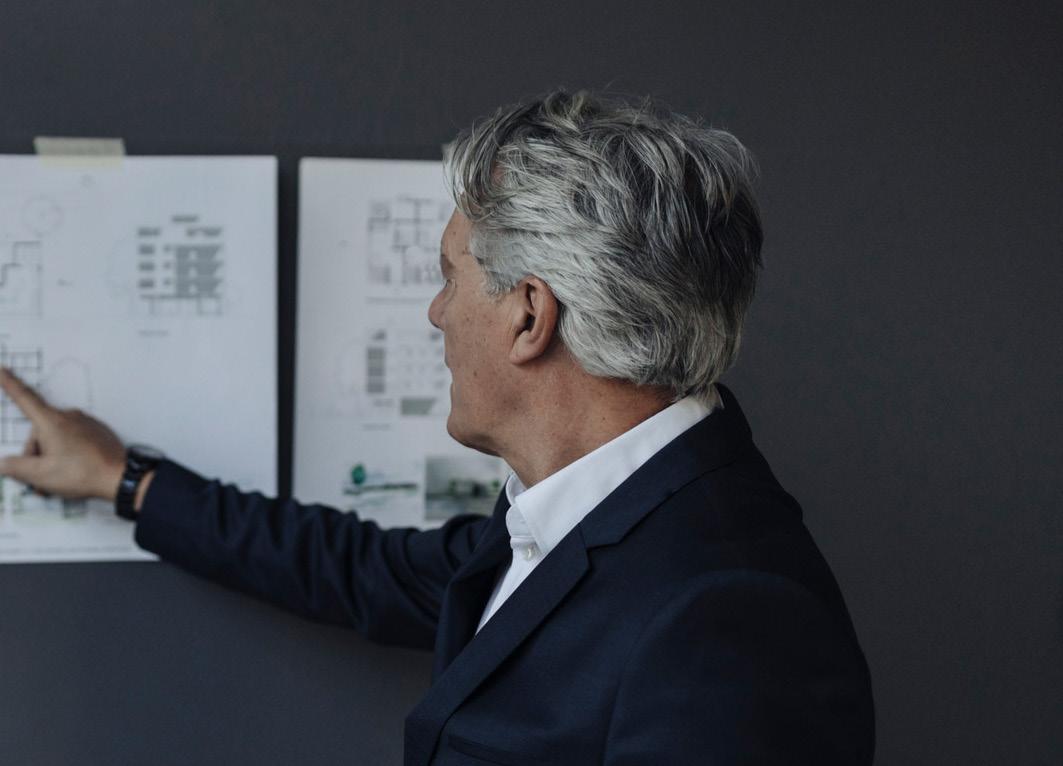
Further, he also champions the lean conversation, which really sums up an important lesson he carries into his work at GE.
“Constantly look to learn and improve and grow. Push your teams and your employers to do the same. Substantively, in ways that really matter. Yes, it can be exhausting at times but also exhilarating. There isn’t a better path to success.”
The Portfolio
















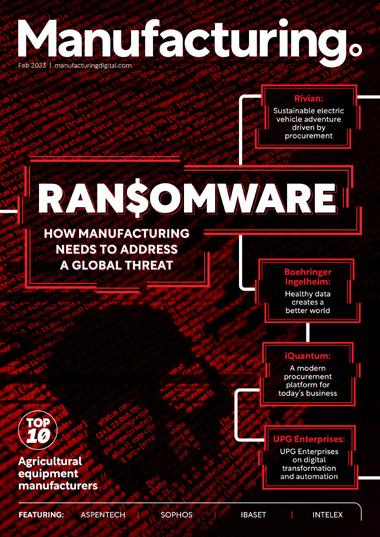







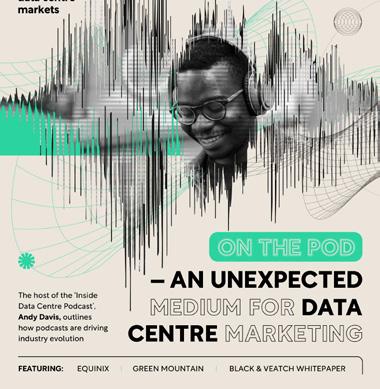
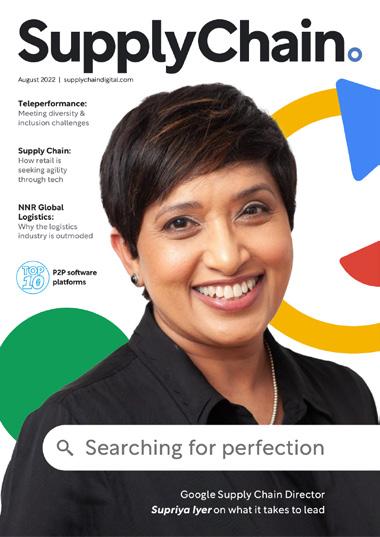












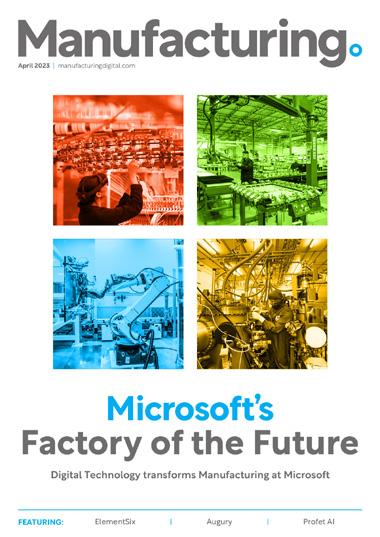







































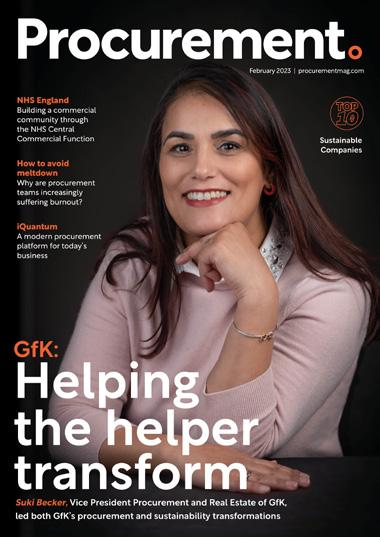















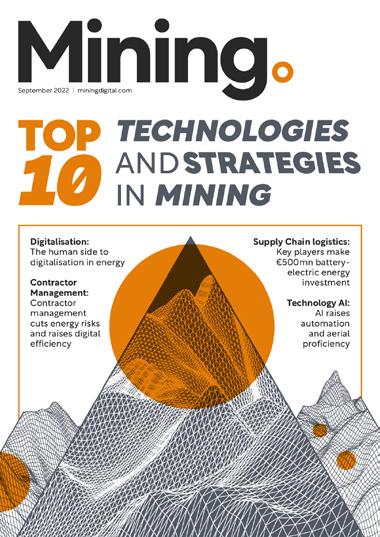









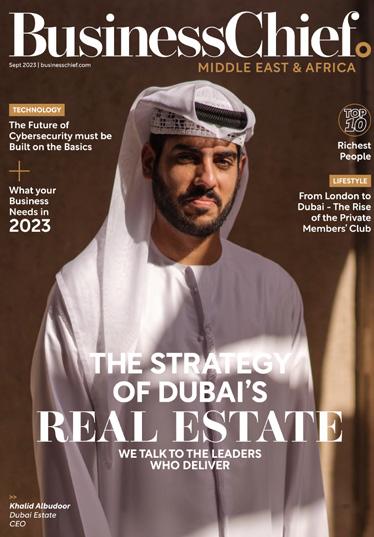








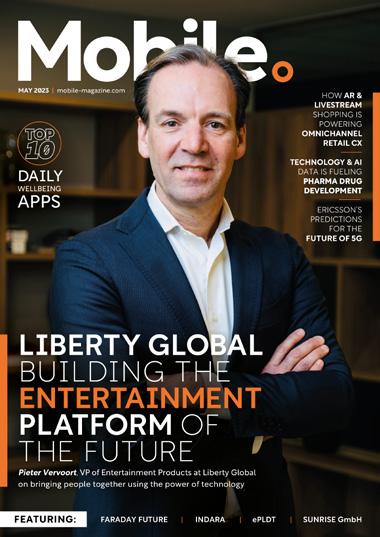
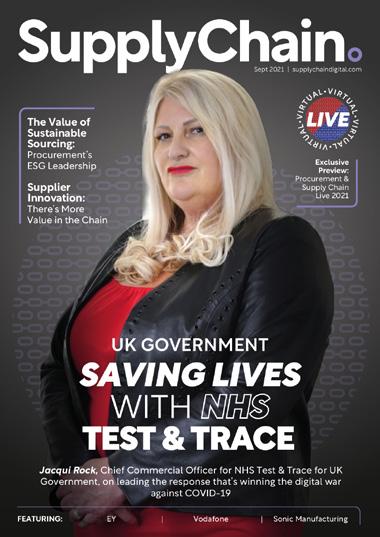



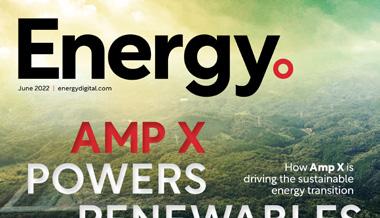


RENEWABLE ENERGY COMPANIES
Energy Digital Magazine is glad to share the 10 companies at the forefront of renewable energy generation—leading the global shift to sustainable energy


In this issue of Energy Digital Magazine, we’re celebrating the previous year’s closing and the success of renewable energy firms driving down emissions while generating more access to sustainable energy sources.
The technology and innovation by these companies is what allows their revenues to climb, but society goes with them as they leave no stone unturned to find new ways of delivering more energy capacity and storage.
WRITTEN BY: TOM SWALLOWRENEWABLE ENERGY COMPANIES


Algonquin Power & Utilities Corporation


Revenue: US$3.35bn
CEO: Arun Banskota
Algonquin Power & Utilities Corporation is built on three strategic pillars: growth, operational excellence, and, of course, sustainability. The company is in pursuit of new ways to help sustain energy and water resources to fuel an ever changing world.
The firm strives to make its mark and does so through renewable water, electricity, as well as the delivery of natural gas utilities—as a more sustainable option to other fossil fuels—to more than 1.2 million customer connections. Many of its clients are based within North America, but this leaves further scope for innovation.
09

Daqo New Energy Corporation
Revenue: US$4.14bn

The Chinese energy corporation delivers components for the success of solar PV systems, from its manufacturing facility located in Shihezi Xinjiang Province, China. Previously, Daqo New Energy Corporation manufactured silicon wafers in Chongqing.
The company changed to its current name in 2009 and operates through a number of subsidiary businesses, including Chongqing Daqo and Xinjiang Daqo. Much of its work has impacted the growth of solar energy installations across the globe as a key business in the renewable energy supply chain.
Brookfield Renewable Partners

Revenue: US$4.76bn
CEO: Mitch Davidson

As a subsidiary of Brookfield Corporation, the renewables arm contributed its fair share to its overall revenue in 2022. The company operates one of the largest publicly traded platforms for renewable power, which is also devised to support decarbonisation.
Diversification is key to the company’s success with a foothold in hydroelectricity, wind power, solar, and distributed energy, sharing its sustainability products and services across five continents.

Canadian Solar

Revenue: US$7.03bn
CEO: Shawn (Xiaohua) Qu
A snapshot of the company’s history shows great success in the realm of renewable energy, including 104 GW of solar modules shipped globally and 3 GWh of utility-scale battery storage infrastructure delivered.
Further, Canadian Solar has more than 160 countries buying into its solutions and 23+ manufacturing facilities across Asia and the Americas. By March 2024, the company plans to reach 10 GWh battery storage capacity and 59 GW of module capacity.
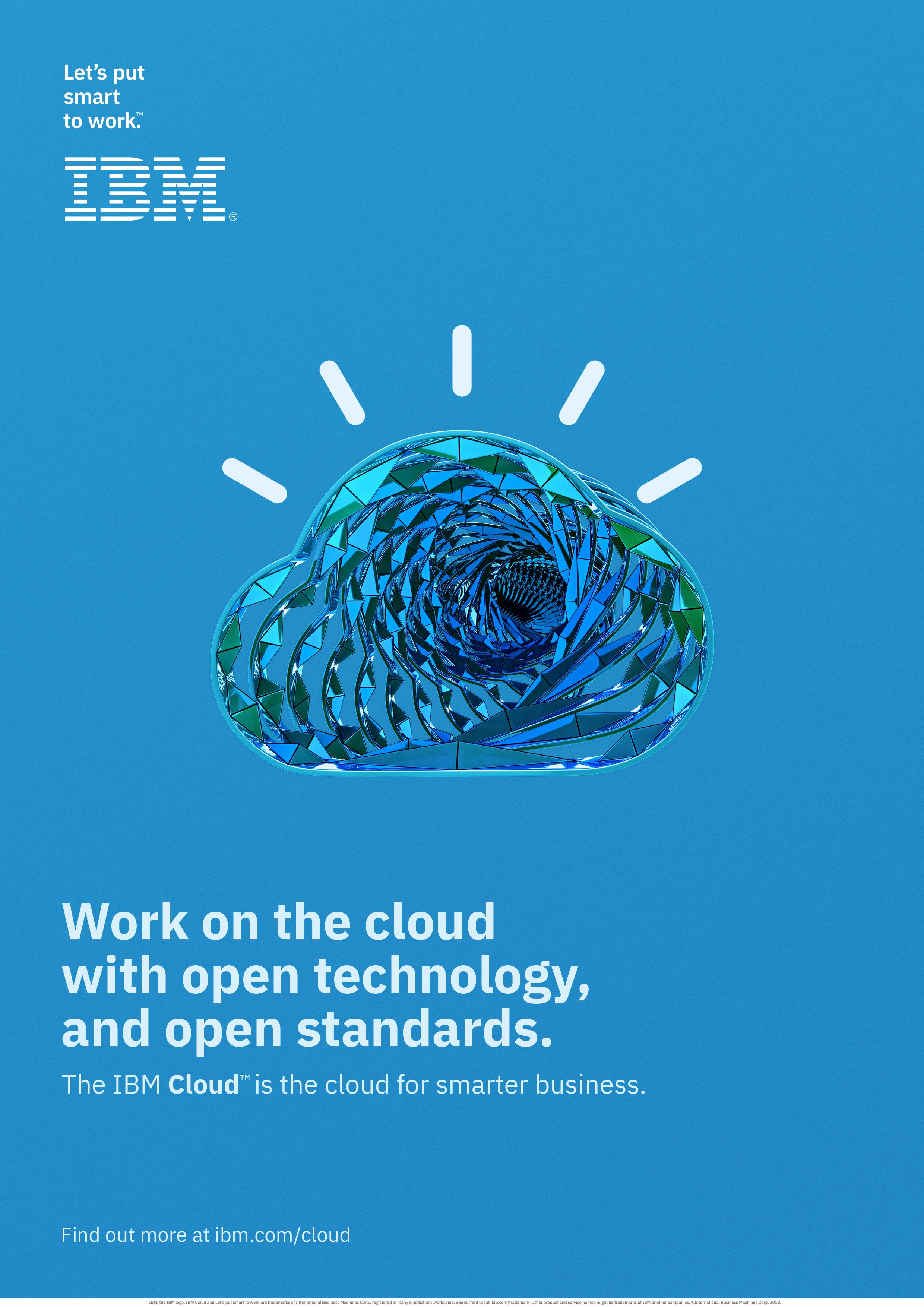
Jinko Solar Holding Company

Revenue: US$10.58bn
CEO: Xiande Li
JinkoSolar is known for its pioneering innovation “vertical integration” capacity from silicon wafer, solar cell, and module production. The company owns 14 global manufacturing facilities based across China, Malaysia, Vietnam, and the US, with production of these components expected to reach new heights by the end of 2023.
Serving more than 180 countries, home to 3,000 customers, Jinko Solar is driving more capacity for solar production, making it an industry leader.
Vestas Wind Systems


Revenue: US$15.46bn
CEO: Henrik Andersen
Vestas is a global ally in the energy sector with a primary focus on sustainable energy, in particular, wind power—as its name suggests. In this area of business the company designs, builds, instals and maintains a wealth of energy infrastructure amounting to 169 GW across 88 countries.

The company is now harnessing data to further drive its performance in the wind energy arena with unparalleled solutions and equally crucial insights to equip its expert team 29,000+ strong with industry professionals.

NextEra Energy

Revenue: US$19.84bn
CEO: John Ketchum
NextEra Energy has approximately US$85bn to US$95bn of planned investments in US infrastructure, which it will see through to 2025.
Known as the top electric and gas utilities provider by Fortune’s 2023 World’s Most Admired Companies list, NextEra was founded in 1925, making it a veteran business in the energy space.
Aside from its effects on the renewable energy market, the company has seen great commercial success with a shareholder return of 480% over the last 15 years.

Constellation Energy Corporation

Revenue: US$22.64bn
CEO: Joseph Dominguez
Constellation Energy Corporation stands as the premier provider of carbon-free energy in the US, extending its sustainable solutions to residential, commercial and public sector applications across the country.
Constellation is driving the shift towards a carbon-neutral future with expansion of its low- to zerocarbon energy. Empowering its clients and communities, the company gives them the choice to make an impact by acquiring, overseeing the green energy journey for them to source electricity sustainably.
Iberdrola
Revenue: US$53bn
CEO: Armando Martínez Martínez
The company was created in 1992 at the time of a merger between Hidroeléctrica Española and Iberduero. The companies were originally born in Spain to deliver hydroelectric power, making it a sustainable business at its very core.

Headquartered in Bilbao, Spain, Iberdrola is now a multinational corporation and the second largest earner on the planet, gaining its increasing revenue from more sustainable energy practices.









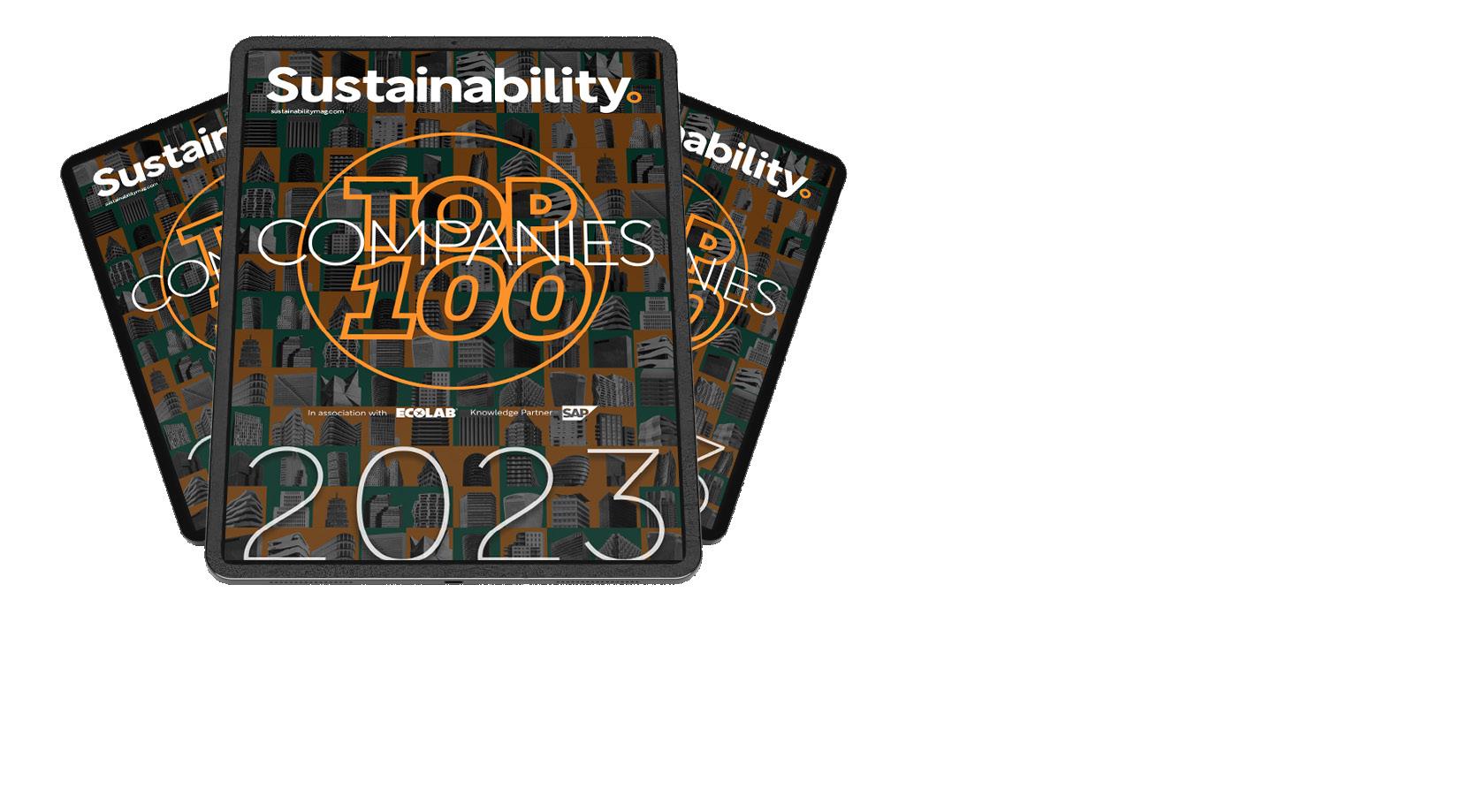
THE TOP 100 COMPANIES IN SUSTAINABILITY








General Electric
Revenue: US$75.07bn

CEO: Henry Lawrence Culp Jr
Multifaceted in its approach to sustainability, General Electric is responsible for some of the most significant developments in the energy sector. With more than 130 years of innovation in the bag, the company is a global figure for renewable energy engineering with a legacy of support for both utilities, aviation and manufacturing as key components of an electrified future.
One of the main project areas of GE at the moment is wind energy where it delivers approximately 67 GW of electricity to countries across the globe thanks to a supply of more than 40,000 wind turbines to a global client base.
























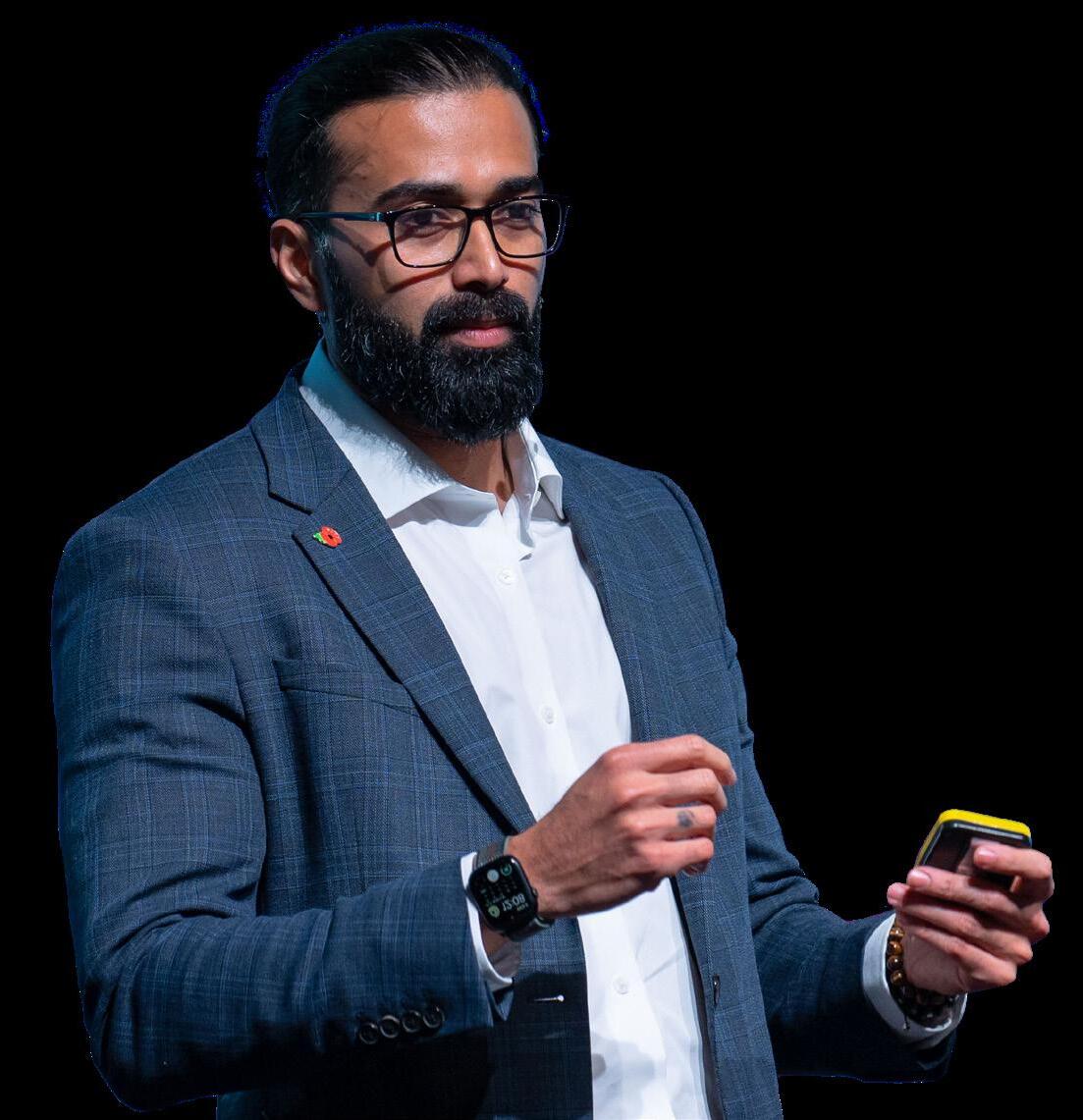
Hydrogen is the underdog that will decarbonise heavy fleets


Aneela Nasim from Dassault Systèmes and Brian Crotty from OPIS discuss the status, challenges and future outlook of green hydrogen supply for mobility
WRITTEN BY: TOM SWALLOWDecarbonisation is about more than simply adopting energy solutions that are deemed ‘renewable’. Of course, wind power and solar energy are now becoming staples in the race to change the climate’s trajectory, but there are some areas where these solutions simply won’t be the most effective to meet certain needs.
The way to explain this is to perhaps think about a system that solely powers a vehicle based on how much energy it can sequester from the sun, which sounds disastrous when considering the nature of solar panels and the speed at which they produce electricity. Likewise, burning coal is poor for the environment, but further solutions could provide energy through the same process with no additional carbon emitted into the atmosphere.
The key point here is that, while the energy mix is changing, this is not to discount all options beyond solar, wind, hydroelectric - all those making use of natural resources in their purest environments. Science and technology these days are becoming more advanced and paving the way for processes that not only reduce emission from historical means of power, i.e. fuel, but also could enhance the lives of many.
Sustainable fuel is a category of conversation that is gaining traction, particularly in the transport sector and related automotive and motorsport industries. In particular, hydrogen is seen as one of the most sustainable solutions that could provide decarbonisation benefits and, as a result, alter the way companies think about energy yet again.

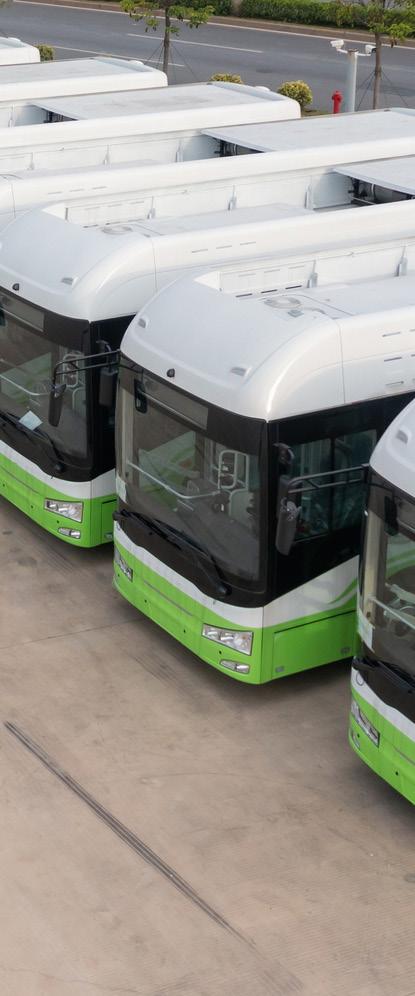
Get reliable network coverage and security protection, fast.
ADVERT PAGE MEDIA SALE






A modern network must be able to respond easily, quickly and flexibly to the growing needs of today’s digital business. Must provide visibility & control of applications, users and devices on and off the network and Intelligently direct traffic across the WAN. Be scalable and automate the process to provide new innovative services. Support IoT devices and utilize state-of-the-art technologies such as real-time analytics, ML and AI. And all these must be provided with maximum security and minimum cost.
This is the power that brings the integration of two cloud managed platforms, Cisco Meraki and Cisco Umbrella. This integration is binding together the best of breed in cloud-managed networking and Security. cisco.com




“According to the World Economic Forum, a decarbonised energy system requires both clean electrification and low-carbon fuels. To reach net zero by 2050, current hydrogen production (grey hydrogen) needs to be decarbonised and scaled to around six times what it is today,” says Aneela Nasim, Growth Industries Lead for EuroNorth at Dassault Systèmes.
The challenge is to bring all hydrogen to the coveted ‘green’ status, which marks renewability and sustainability, but there are still a number of grey areas within the industry, particularly as hydrogen relies on electricity, which comes from a number of different places.
“Hydrogen is attracting attention and investment as a sustainable energy alternative,” says Brian Crotty, General Manager of Dow Jones Energy. “To achieve its environmental promise, hydrogen must be produced using renewable energy sources. To do so, industry and science will need to address logistical challenges and cost barriers.”
In a nutshell, there are four key areas governing the success of sustainability hydrogen:


• Hydrogen is more costly than other sustainable solutions



• Infrastructure is required, which incurs further cost implications as well as time to innovate
• Technologies are not yet ready to be scaled to industrial levels
• Private investment hinges on governments backing hydrogen industries
“The green hydrogen market is poised for rapid growth, expanding from under one million tons per year now to hundreds of millions of tons per year by 2050”
ANEELA NASIM GROWTH INDUSTRIES LEAD FOR EURONORTH, DASSAULT SYSTÈMES
Hydrogen colours
Blue Hydrogen - Produced using a natural gas feedstock and employing a process called steam methane reforming (SMR)

Yellow Hydrogen - Refers to hydrogen produce through solar-powered electrolysis, emitting no carbon and using renewable energy sources
Pink Hydrogen - Generated through electrolysis that is powered by nuclear energy

Green Hydrogen - Produce via renewably-powered electrolysis, emitting no carbon; a sustainable energy carrier for various industries
To follow the final point, Nasim explains: “The only way to attract private investment is to have governments actively support the creation of this new branch of the global economy by pushing through regulation and policies to make it possible.”
Touching on the infrastructure point, Crotty also highlights some of the key pain points hindering further progress of a green hydrogen supply chain.
“Hydrogen is acidic, creating challenges for transportation in pipelines,” Crotty says. “Transporting hydrogen over long distances also requires liquefaction, which only happens at extremely cold temperatures - hydrogen does not liquefy until -253 degrees celsius.”
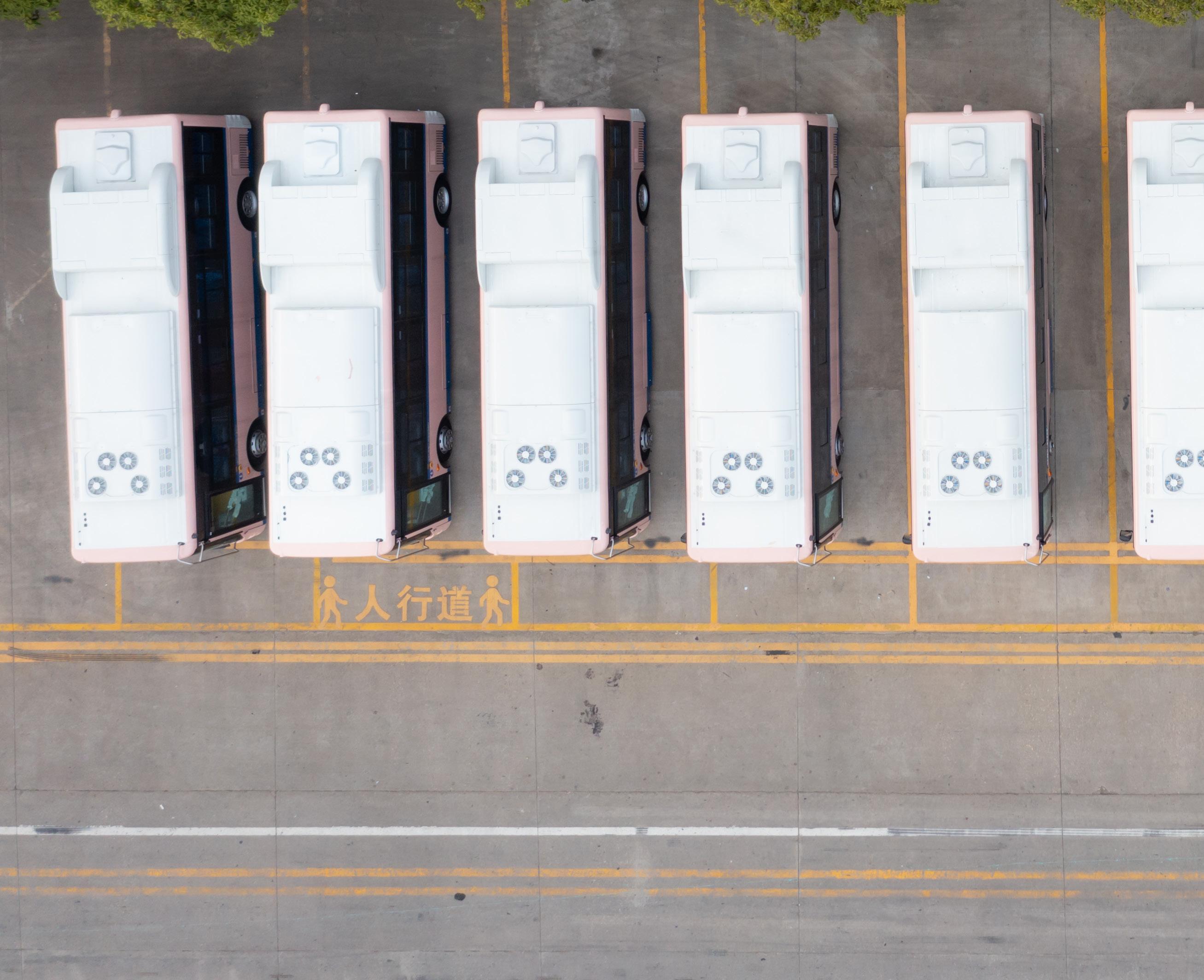
Investing in hydrogen infrastructure of the future


Actions are being taken to evolve this sustainable industry, and can be categorised by physical and digital efforts to reduce the barriers placed on hydrogen production. On the exploration side, Crotty explains that sourcing is a key area of focus as businesses go in search of more suitable, less impactful materials for electrolysers.
“To reach full hydrogen commercialisation, we need to scale up electrolyser manufacturing capacity and efficiency, increase renewable electricity supply and find alternatives to the rare earth mineral catalysts that power electrolysis.

“The Aerospace industry is also starting to experiment with design and infrastructure around hydrogen for aircraft”
ANEELA NASIM GROWTH INDUSTRIES LEAD FOR EURONORTH, DASSAULT SYSTÈMES
“There are breakthroughs already happening thanks to innovative research. For example, chemists have found ways to advance electrolyser technology to produce hydrogen using seawater.”

On the digital side, actions are to be taken to ensure optimisation of value chain processes, using data as a source of insight to inform decision-making.
“All green hydrogen value chain processes - from hydrogen production to storage and distribution - must be optimised,” says Nasim. “This is why digitalisation, specialised technologies and data are needed to provide insight and solutions to the challenges the industry is currently facing.”
Automotive is a focus area for hydrogen adoption
Understanding the challenges imposed on the industry, and actions that can be taken to bring green hydrogen into the renewable energy mix, we can begin to see where this solution could find its place in years to come. Particularly in the automotive sector - which is undergoing the most significant transition of the past Century - more attention lies within the hydrogen versus electric debate, and many would argue there isn’t one as these solutions are compatible to different circumstances.
Commercial fleets have historically been behind in the race to decarbonise, which could relate to the overwhelming emphasis on battery power as the solution for mobility. As we see today, more and more companies are delivering hydrogenonly or hydrogen-extended solutions that work in favour of businesses that wish to decarbonise their long-haul fleets.
The caveat here is the aforementioned challenges delayed various factors.

Nevertheless, it seems hydrogen is primarily a source of sustainable power for heavy industries, which makes this a very valuable resource for trucking, maritime transport, and commercial aviation.
“Hydrogen is already being used in the automotive industry with startups like Hopium where the vehicle has an integrated fuel cell system that generates the energy needed to power the vehicle while emitting nothing but water,” says Nasim. “The Aerospace industry is also starting to experiment with design and infrastructure around hydrogen for aircraft making it an incredibly exciting time in the industry.”
To put this into perspective, Crotty explains that the industry is poised for a rapid spike in interest from the industry.
“The green hydrogen market is poised for rapid growth, expanding from under one million tons per year now to hundreds of millions of tons per year by 2050, according to OPIS analysis,” says Crotty.

The mobility sector represents a significant opportunity, with hydrogen expected to replace fossil fuels in hard-toabate applications such as heavy transport. Since hydrogen consumption does not emit greenhouse gases, transitioning to hydrogen fuel cells will be key to reaching netzero goals.

“All green hydrogen value chain processes - from hydrogen production to storage and distributionmust be optimised”
ANEELA NASIM
GROWTHINDUSTRIES LEAD FOR EURONORTH, DASSAULT SYSTÈMES WRITTEN BY: TOM SWALLOW PRODUCED BY: STUART IRVING
Schneider Electric provides sustainability leadership

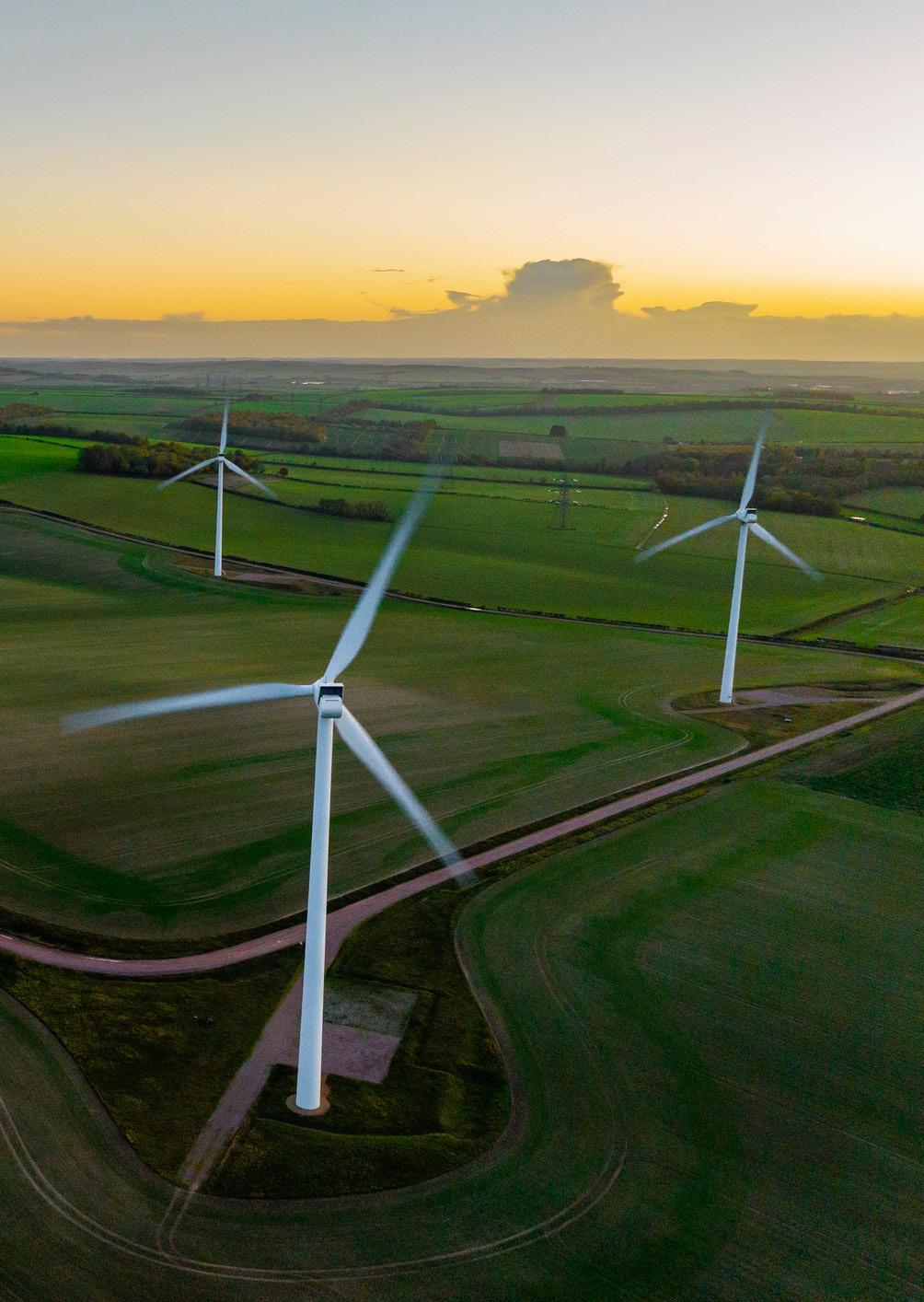
Schneider Electric’s Global Head of Sustainability shares initiatives with business ecosystem to uncover emissions

There need not be disparity between small-to-medium enterprises (SMEs) and the multinational companies (MNCs) that seemingly tower above them in the race to sustainability. In fact, businesses are linked more than they realise, which is why the world is entering a more collaborative state whereby businesses become partners and goals are unified. This is particularly so in the case of supplier and customer interactions as relationships between parties are critical in helping them build resilience and reduce their overall impact in line with all Scope emissions.
There are two factors to this. Firstly, there’s the understanding of the necessity and the opportunities presented to businesses when they take climate change on board as a key component of business. And several elements are to be considered here by businesses as a part of their business strategy:
• Regulatory: with increasing constraints & incentives for businesses to decarbonize coming to enforce the “Net-Zero World” such as the CSRD from the EU.
• Resilience: with Climate change in any case underway, ensuring healthier but also more robust business practices that mitigate associated risks.
• Competitiveness: Being in tune to existing and emerging customer demands regarding one’s own carbon footprint and commitment.

The second is the move from plans to tangible, measurable and replicable actions and, these days, technology is at the heart of achieving new outcomes with lasting impacts.
This is where partnerships can really help accelerate the transition to more sustainable systems and reconcile business and sustainability, creating wealth and growth, while actively contributing to the protection of our common heritage and the planet. Thanks to Schneider Electric and its approach to its business ecosystem, there are myriad SMEs across the globe developing their knowledge and activities to mitigate climate change.

“It’s about turning it beyond building that market awareness; beyond that education to actually go after tangible, measurable, replicable claims”
SOROUCH KHERADMAND GLOBAL HEAD OF SUSTAINABILITY FOR BUSINESS ECOSYSTEM, SCHNEIDER ELECTRIC
Enabling these kinds of actions to take place is not simply done by chance. Sorouch Kheradmand, tells us how the multinational energy management and digital automation businesses positively impacts supplier and customer perception to bring them on board with a sustainable way of thinking.
Having worked his way up the chain from an engineering position to his influential role at Schneider, Kheradmand is able to work closely with partners. This is not only to share its insights into climate change but also to deliver the tools to allow large companies and SMEs alike to deliver on their own targets while simultaneously


SOROUCH KHERADMAND
TITLE: GLOBAL HEAD OF SUSTAINABILITY FOR BUSINESS ECOSYSTEM
COMPANY: SCHNEIDER ELECTRIC LOCATION: SINGAPORE
Sorouch is a senior executive for Schneider Electric where he manages Sustainability globally. Sorouch had various experiences, starting his career in R&D, before leading large strategic projects (M&As/divestures) and later on large commercial teams. Passionate about Sustainability, he made it his career and tries to show ways businesses can harness it to grow and outdo their competition, while having a positive impact on People, Planet & Society. On top of his current job, he often writes, talks and exchanges
meeting demands of their own suppliers and customers. Initially sceptic about how business could answer profitably to the climate crisis, Kheradmand is now focused on delivering his advocacy to a worldwide network of businesses to drive a significant impact, at scale.
“Schneider is very active in decarbonising its operations, and I said ‘what can we take from that and actually apply to our ecosystem of suppliers, partners and customers?’” says Kheradmand. “We reached out to our customers, we listened to them, we saw that there is a willingness to do something. But we needed to make sure people understood what was in it for them and how they could walk the talk.”

“The beauty of Schneider Electric is that we have so many solutions for the active management of building infrastructure and data centres”
SOROUCH KHERADMAND GLOBAL HEAD OF SUSTAINABILITY FOR BUSINESS ECOSYSTEM, SCHNEIDER ELECTRIC
Sustainability needs to be demystified and made tangible
What quickly came to light was the need to make sustainability tangible-ie, how can you measure your impact on the climate when you can’t directly visualise it?

The word ‘tangible’ marks the first stage of Schneider Electric’s strategy, which is completed by realising impact and understanding how to benchmark sustainability using data on environmental, social, and governance (ESG) metrics. This is where Kheradmand really tapped into his desire to educate—one that was formed during his career journey. He recognised that businesses must first understand their impacts in simple terms; facts, figures and
data that is objective to the organisation. “This means marrying the science of sustainability—and to start carbon—and the art of business, which basically refers to how you gain customers and improve your market footprint, margins, costs, and increase prices,” says Kheradmand.
“We tried this with our customers. We went to them, sat with them and figured out plenty of solutions already exist. It’s a science and you need to be very specific and particular about what you want to deliver. It needs to be tangible, measurable and reproducible.”
This first stage influenced the founding of the Schneider Electric Sustainability School. This free initiative helps train stakeholders
in carbon measurement, management, and further processes to ensure that their businesses can be sustainable long term.
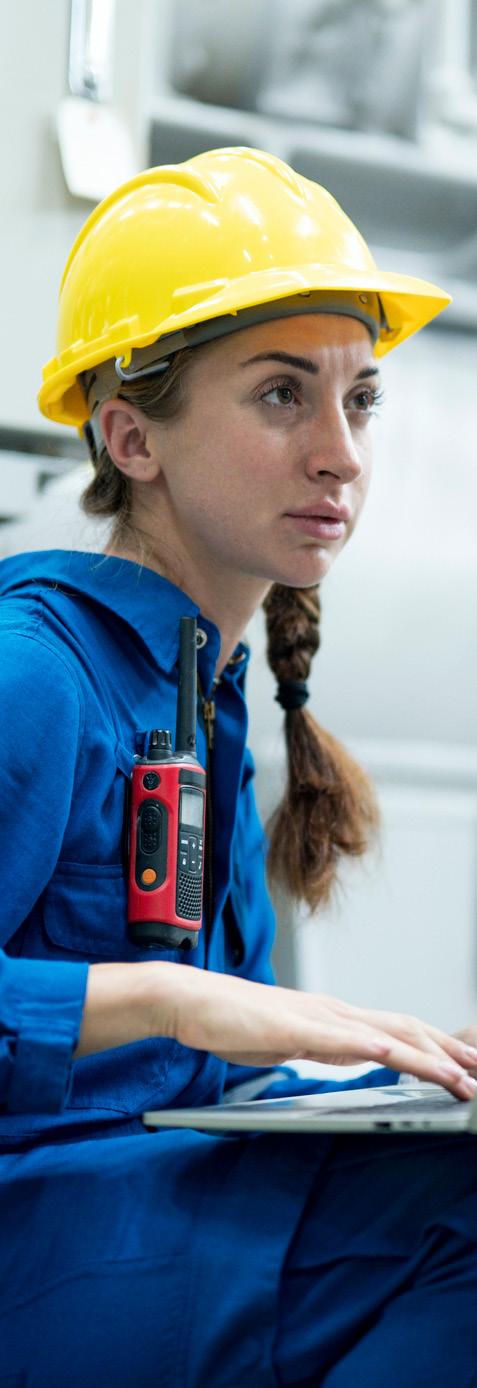
The programme helps businesses to first gain knowledge of their impacts and the opportunities available to them. The second step to be launched in October 2023 covers decarbonisation strategy, enabling organisations to achieve their goals using digital tools to monitor their carbon footprints. Thirdly, Schneider is dedicated to teaching SMEs how they can reap the commercial benefits, such as lower costs, better efficiencies, and the ability to market their environmental impacts as a key differentiator, doing so in a way that is true to the science sustainability.
Dealing with this step is a matter of mindset. As Kheradmand explains “Sustainability today is kind of like digital was 20 years ago”, in a sense that transformation was seen as a ‘must’ without really understanding the business dynamics nor the position to measure the impacts of technologies over time. The same process is happening with businesses and their sustainability impacts, which is why it’s important to understand the current situation and actions that can be taken with stable effects economically. This is where Schneider Electric sustainability approach is framed around three axes: Strategise (by measuring your footprint to build an achievable ambition), Digitise (by measuring and tracking progress regularly), Decarbonise (by taking the steps to make one’s business less carbon intensive and more sustainable).
Supporting targeted decision making through digital tools
Having avoided aimlessly making changes to become more sustainable, it’s time for
businesses to begin measuring and taking actions that are in line with their operating model and have measurable Return on Investments (ROI). Technology is a key component of this step and Schneider delivers a solution it calls Zeigo Activate.
Supporting SMEs in the strategy process, Zeigo Activate looks at how business can align with decarbonisation, which can only be achieved methodically. This solution enables greater insight into operational functions, the effects that each potential improvement actions would have on the environment and bottom line, and sheds light on the things that businesses can manageably change to begin reducing carbon emissions in a step by step approach to ultimately reach the ambition they have set.
Zeigo Activate is destined to digitise this whole thought process to plan, act and track. It is usable regardless of your own Sustainability expertise and is designed to streamline the user’s action plan to become more efficient down to execution, by leveraging an open marketplace of service providers that can support you to carry any changes, such as switching out legacy technologies for more up-to-date ones or even adopting entirely new systems for renewable energy or power management.
Leveraging this tool will enable SMEs and beyond to assess and eliminate their emissions in Scope 1 and 2, and Schneider is working to deliver Scope 3 reduction capabilities, which will likely require integration with inter-organisational data.
“Simply by comparing business KPIs and adding Sustainability KPIs in the mix, you

start building a framework that is much better for decision making, because you see the possibilities. One solution may have a great impact on the climate, but a terrible impact on your business and its profitability,” says Kheradmand.

“However, you may find a few more actions that have a similar impact on your footprint, but a much better, even profitable, business-friendly, business impact, ideally even a competitive advantage.”
The idea explained by Kheradmand is to look for and focus first on sustainability ‘wins’ that are economically beneficial for the business—ultimately suggesting there could be a number of actions to take that present low or no impact commercially. At the end of the day, the aim is to limit impact rather than advocate for it.
“I started testing this view with my customer category. Of course, we quickly found a few issues they wanted to address; we had quite a few successful campaigns
with them and tangible examples to draw from onwards,” says Kheradmand.
“The beauty of Schneider Electric is that we have so many solutions for the active management of building infrastructure, data centres, “active” being basically what we call technologies impacting the way an asset behaves during its operational lifetime.”
What Kheradmand’s metaphor represents is the strategy taken to cement some sustainable processes that are easily implemented while being embedded into the business, before focusing on much
larger programmes to tackle ever-evolving problems. His view is that maximising such actions at a large scale is where the focus should be first to fight climate change while continuing to create wealth and prepare for the next wave of investments.
Building trust allows Schneider Electric to really make an impact on its ecosystem in a positive way with the aim to create a ripple effect whereby SMEs communicate with their suppliers and customers about their achievements and strategic planning and this creates a virtuous and self-

“Simply by comparing Business & Sustainability KPIs together by initiative, you start building a framework that is much better for decision making”
SOROUCH KHERADMAND GLOBAL HEAD OF SUSTAINABILITY FOR BUSINESS ECOSYSTEM, SCHNEIDER ELECTRIC

“Schneider is very active in decarbonising its operations, and I said ‘what can we take from that and actually apply it?’”
SOROUCH KHERADMAND GLOBAL HEAD OF SUSTAINABILITY FOR BUSINESS ECOSYSTEM, SCHNEIDER ELECTRIC
maintained momentum towards large scale decarbonation across the industry.
“A strategy always starts from the market, and therefore customers. When you look at a strategy, it’s about understanding where you are today—where your market is today— where your current and potential new markets will be in the next five years, and also where you want to go in those five years, picking the right fights” says Kheradmand.
Referring back to the need for data, it’s clear from this conversation that it’s the starting point for most actions taken in the name of emissions reduction. Moving forward, Schneider’s initiatives will seek to recognise sustainability as an imperative and share tips for management and

process implementation. To recognise these impacts, the company set up the Sustainability Impact Awards, which acknowledges the high achievers within its partner, supplier and customers networks.
“We launched the Sustainability School— Chapter 1—in April earlier this year. The same year as for the Impact Awards, the first session of which was held eight months ago,” says Kheradmand.
“Now, it’s about turning it beyond building that market awareness; beyond that education to actually go after tangible, measurable, replicable actions and claims. This means giving the tools and the means to our partners and customers in the market to act on their footprint.”
To summarise these points, Schneider Electric is committed to partner support as it recognises both the demand for Scope 3 emissions reduction, but also the barriers that its ecosystem faces in meeting mere Scope 1 and 2 requirements. By bringing sustainability to the forefront of the business, naturally it will enable and incentivise its ecosystem to follow with more impact rippling down the supply chain.
This impact will be achieved through a “toolbox”, a variety of easy to access digital tools, among which Zeigo Activate, the Sustainability School and much more, to enable companies in making emissions reduction more achievable and profitable. To recognise this process for both its challenges and its success, the Sustainability Impact Awards rewards great achievements seen by partners and customers that are willing to take positive action, with more programs underway to push this momentum forward.
COMING SOON AWARDS
2024
The Global Sustainability Awards 2024 will be celebrating the very best in Sustainability & ESG with the following categories:

Sustainability Strategy Award
–
ESG Program Award
–
Climate Change Award
–
Diversity & Inclusion Award
–Net Zero Award
–
Sustainable Supply Chain Award

–
Sustainable Technology Award
–
Sustainable Consultancy Award
–
Future Leader Award
–
Executive of the Year Award
–
Project of the Year Award
–
Lifetime Achievement Award

COULD SMART BUILDINGS

BE THE KEY TO A SUSTAINABLE FUTURE?
Jonathan Williams (Siemens) and Bettina Tratz-Ryan (Gartner) discuss the diverse landscape in smart building adoption and its sustainable benefits
WRITTEN BY: GEORGIA WILSONCombining assets, infrastructure, and services, smart buildings are orchestrated to facilitate a user and usage driven experience. Sharing data across disparate building systems, a smart building can adapt its environment to better optimise the experience for occupants.
“The ‘smartness’ of buildings come from the ability to align a building’s ambience and services towards the user’s expectation in real time, through applications, or through smart facilities management,” says Bettina Tratz-Ryan, Research Vice President, Gartner.
Jonathan Williams, Branch Sales Manager, Siemens (UK) adds to this: “Typically, they achieve this by using a network of connected Internet of Things (IoT), integrated building management systems, analytics platforms, workplace apps, artificial intelligence and digital services to enable new ways of working and more innovative business models.”

A diverse landscape
While many countries have begun to adopt the concept of smart buildings, the current landscape remains diverse with adoption remaining in its early stages. “In the UK alone, only 5% of commercial buildings in the UK can really be called ‘smart’,” explains Williams.
“Most smart buildings are designed as commercial buildings, airports or exclusive residential properties as they combine
aesthetic architecture with state of the art technology,” adds Tratz-Ryan.
She continues: “For existing buildings, many of the technology systems that contribute to the ‘smartness’ are not compatible with each other, meaning they do not share structured or unstructured data or connect data streams for building optimisation or user journey experiences.”

However, this means there is huge potential for building owners, managers and occupiers to benefit from better and more efficient use of resources, greater intelligence and optimised performance.
“We’re expecting to see an acceleration in implementation of smart building tech in the years ahead as technology advances, while becoming easier to implement and more accessible. This is especially the case given the backdrop of the energy crisis forcing businesses to take action over their energy bills, alongside the march towards decarbonisation,” predicts Williams.
“SMART BUILDINGS DEVELOP VISIBILITY INTO ENERGY AND CARBON FOOTPRINT”
BETTINA TRATZ-RYAN RESEARCH VICE PRESIDENT, GARTNER
SIEMENS - SMART BUILDING SOLUTIONS
We adopt a consultative and workshop approach to fully understand the challenges and aspirations of our customer. In particular for refurbishments this will involve working with legacy systems from multiple vendors and have the technology and capability to deliver the necessary integrations.
We offer a complete smart-building management suite platform and have developed next-gen technology with Building X, part of our wider Siemens Xcelerator digital business platform.

Building X is an open, scalable, cloud-based enterprise platform that combines the physical and digital worlds. It offers a range of API-centric tools across sustainability –energy consumption, emission data, and water usage – as well as broader facilities management tools such as alarms and security operations. The platform supports intelligent automation of all these systems, as well as multi-site monitoring and control capabilities.
Adoption challenges
Smart buildings require an advanced understanding of a common data environment for connected and data driven outcomes. “That common data environment is complex to establish and therefore, properties with lower rental value or social housing have a difficulty to justify the capex, while they would benefit substantially from the intelligent and contextualised services that could be potentially offered,” explains Tratz-Ryan.
Another significant challenge is the integration of smart technology into existing
buildings. When it comes to retrofitting smart technology there is no one-size-fits-all solution, every case is slightly different. “The lack of openness and collaboration between different smart tech platforms has previously been difficult to overcome but it’s refreshing to see the move away from closed software platforms to much more open systems, enabling deeper integration,” adds Williams.
He continues: “At Siemens, we believe in the importance of maximising compatibility in this area – and making building management data easily available for sharing by working with industry-

“WE’RE EXPECTING TO SEE AN ACCELERATION IN IMPLEMENTATION OF SMART BUILDING TECH IN THE YEARS AHEAD AS TECHNOLOGY ADVANCES”
JONATHAN WILLIAMS BRANCH SALES MANAGER, SIEMENS (UK)
compatible partners to achieve that improved interoperability. Tackling thesebig challenges can’t be achieved by individual businesses working in silos and taking a wider ‘ecosystem’ approach is necessary for technology underpinning smart buildings to work as effectively as possible.
Smart buildings and the wider sustainability agenda
Buildings are responsible for 40% of the energy consumption in the UK alone, therefore it is a crucial area in need of transformation to achieve net zero.
“From a wider government and industry perspective, the biggest challenges – but also the biggest potential rewards – are posed by refurbishing legacy buildings, where the range of ages and types of stock creates a complex problem. Replicating the 20-30% savings achieved through smart technology across the commercial built environment would be a significant step in the right direction towards net-zero targets, ” explains Williams.
“Smart buildings develop visibility into energy and carbon footprint”, says Tratz-Ryan “they help cities, districts or organisations achieve their net-zero goals. Since data driven insights are at the heart of ‘smartness’, the carbon footprint for direct and indirect emissions can be identified.
Tratz-Ryan also highlights the benefits of smart building when it comes to climate change to respond more efficiently to heat islands in cities, as well as geo-spatial data analysis, building structures like walls or rooftops can be also planted to become vertical farms or greenspaces, supporting biodiversity.
Where to begin when implementing a smart building strategy? Those looking to develop a smart building strategy need to understand that ‘smart’ means utilising technology as an enabler that is focused on user or use case specific outcomes. “They need to build a digital thread of their systems to create the data orchestration environment, that for non –technical decision makers, can align
Bettina Tratz-Ryan
TITLE: RESEARCH VICE
COMPANY: GARTNER
PRESIDENTINDUSTRY: CONSULTANT
LOCATION: GERMANY
“MOST SMART BUILDINGS ARE DESIGNED AS COMMERCIAL BUILDINGS, AIRPORTS OR EXCLUSIVE RESIDENTIAL PROPERTIES AS THEY COMBINE AESTHETIC ARCHITECTURE WITH STATE OF THE ART TECHNOLOGY”
BETTINA TRATZ-RYAN RESEARCH VICE PRESIDENT, GARTNER

GARTNER - SMART BUILDING SOLUTIONS
Gartner offers research on smart building technology. There are many solutions in the smart building market, starting from building information modelling which companies like Autodesk, Bentley or Trimble are offering. There are also many building management systems using common data environments, and Building X by Siemens, Autodesk or Asite are key vendors there. Then there are facilities management, building energy management, and other platforms which provide a specific solution in the building ecosystem.

TITLE: BRANCH SALES MANAGER

COMPANY: SIEMENS (UK)
INDUSTRY: MANUFACTURING

LOCATION: UK
the green, smart, sustainable, inclusive, ambient, healthy, social and other aspects to users and value propositions,” explains TratzRyan. “They also need to follow the climate change and sustainability challenges of their locations to build future proof assets.”
Williams also notes that it is important to partner with the right technology providers, with the right skills and capabilities to lead the smart building journey to ensure that activity is based on data-driven insights and delivering measurable business outcomes.
“With the right partner on board, the first step is to set a strategic vision, benchmarking a start point, and defining realistic goals and KPIs for the investment. The next move is to develop use cases. In other words, identify the priority pain points and challenges to tackle and create a strong business case for investment,” explains Williams.
“With this in place, it’s time to execute on the plan by implementing the technology. Finally, it’s vital to monitor and measure the impact of the transformation to inform and build strong business cases for future investment,” he concludes.
Jonathan Williams& THE ENERGY CRISIS


CRISIS

Simultaneously facing two significant challenges in the energy sector - climate change and the energy crisis - energy independence and security, alongside decarbonisation will be crucial to navigate these rough waters.
“While reports claim that renewables are set to meet all growth in electricity demand this year, the reality is that there’s no guarantee that this green energy will be consumed. Simply put, the renewable energy that is being generated cannot be integrated onto the grid,” says Frederic Godemel, EVP Power Systems & Services, Schneider Electric.
Adding to these challenges is the lack of integration and coordination between electro-intensive industries which is making it difficult to balance energy demand, which is overall contributing to global emissions. “In many countries, lack of infrastructure, such as grid and transmission networks, logistics highways and ports, is curtailing the expansion of wind power and stifling the very innovation needed to transform the energy system,” adds Godemel.
“To address these challenges, we need more infrastructure that can support the transmission and distribution of electricity from renewable sources. Lucky for us, the solutions already exist. Digital Technologies are the key to balancing grid supply and demand when integrated with renewable energy.”

Executives from Schneider Electric, Capula and Ericsson discuss the pivotal role that automation will play in addressing climate change and the energy crisis

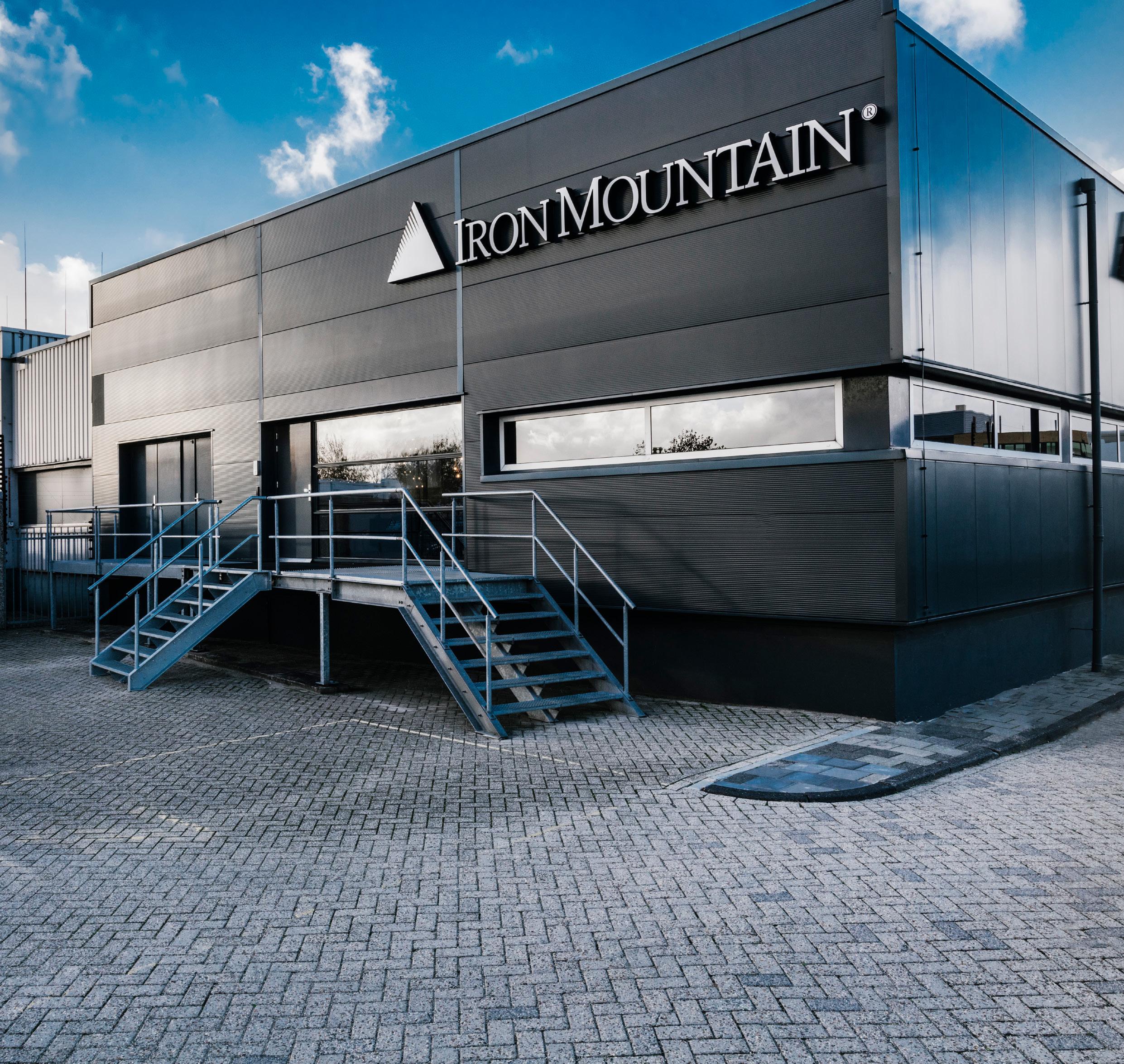
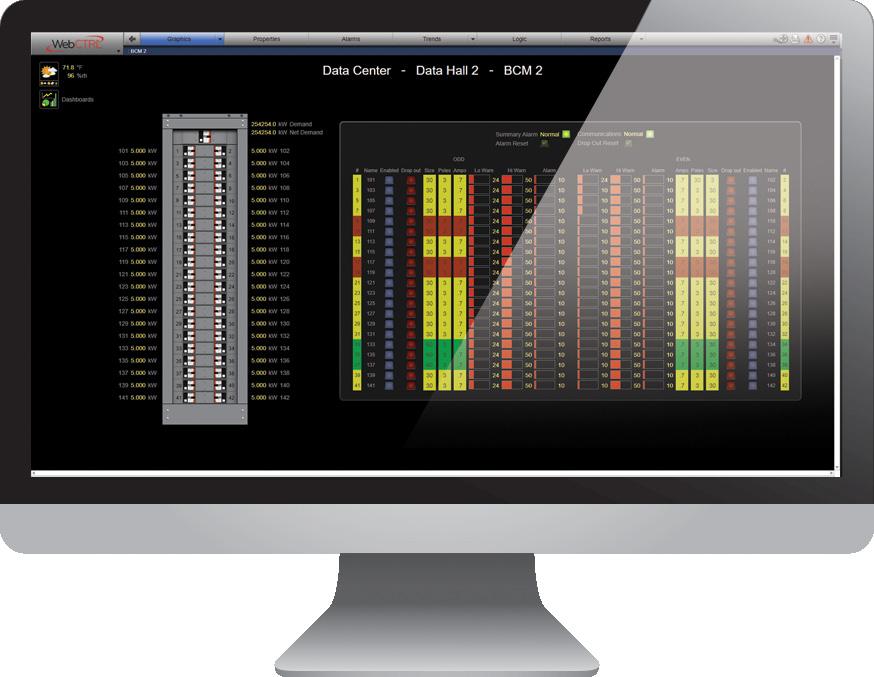
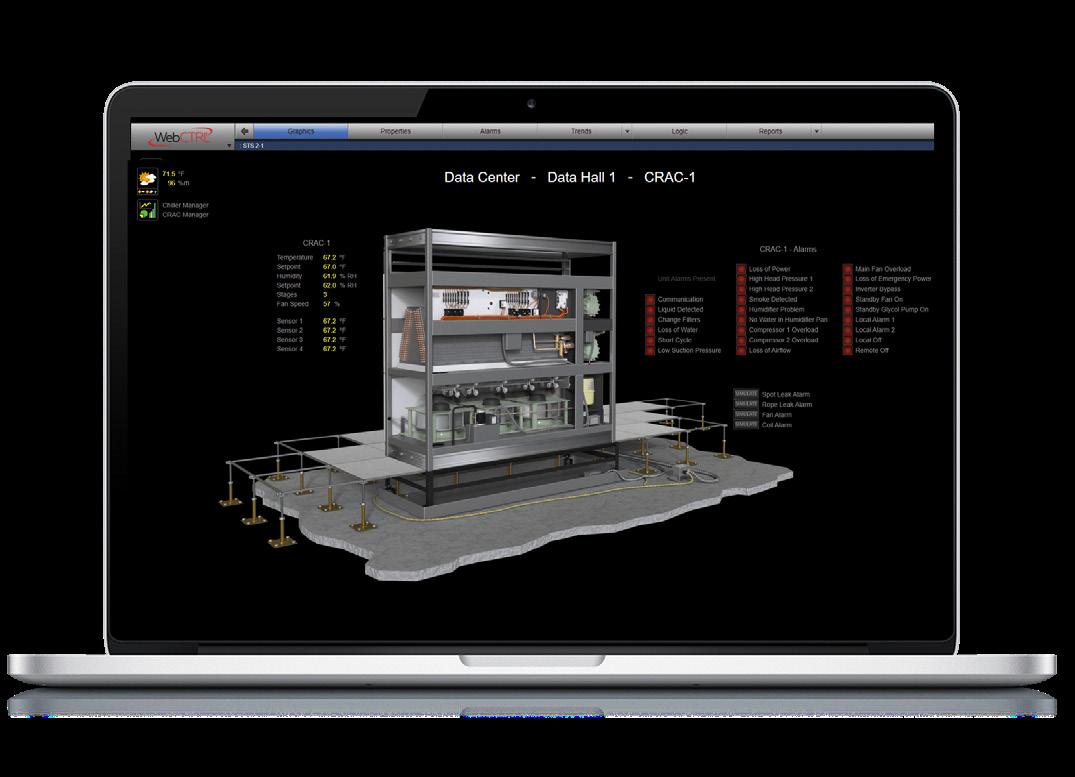

With digital solutions estimated to be able to reduce global emissions by up to 20% in the energy, materials, and mobility industries. Two core examples are smart grids and Robotic Process Automation.
Automation takes over the world
Taking over the world in many ways, the energy sector is no stranger to the capabilities that automation can provide. The technology enables the sector to streamline its processes and analytics capabilities, improving efficiency, reliability, and decisions based on real-time insights as well as reduce energy loses.
“According to reports, electricity grid investments of US$635.3 billion will be needed until 2030, to support the planned rapid uptake of electric vehicles, renewable energy, and heat pumps, and shift away from fossil fuels. Of which, US$185bn would focus on digitalisation including smart grids. Smart grids, equipped with digital technologies and sensors, can monitor energy consumption patterns, and optimise the distribution of electricity, ensuring more efficient use of resources,” explains Godemel.

“By embracing automation and smart grids, organisations can enhance asset management, improve efficiency, and make
Lujan Pey
TITLE: ACCOUNT MANAGER
COMPANY: ERICSSON
INDUSTRY: IT SERVICES

LOCATION: UNITED KINGDOM
LUJAN PEY ACCOUNT MANAGER, ERICSSON
“A COMPREHENSIVE ECOSYSTEM OF TECHNOLOGY PARTNERS THAT ARE COMPATIBLE WITH EACH OTHER OFTEN ENSURES THE SUCCESS OF DIGITALISATION PROJECTS”
faster, data-driven decisions. Automation can also play an important role in the integration of new renewable energy connections into the grid,” adds Chris Dormer, Head of Sales for the Energy business at Capula.

“This recent step change in digitalisation is a vital development that complements automation efforts. Automation has unlocked vast amounts of data from the grid. Now, with digitalisation, this data can now be accessed, analysed, and utilised in a more sophisticated manner. The availability of this data empowers

“NO MATTER HOW ATTRACTIVE A STANDALONE TECHNOLOGY IS, IT WILL NOT BE USEFUL IN A REAL-LIFE DEPLOYMENT UNLESS IT IS CAPABLE OF WORKING WITH THE REST OF THE PIECES OF THE END-TO-END SOLUTION”
LUJAN PEY ACCOUNT MANAGER, ERICSSON
organisations to make informed decisions, optimise grid operations, and address the challenges posed by the transition to net zero emissions.”
The future is ecosystems
When it comes to digitalisation, creating an ecosystem for technology solutions instead of standalone systems, allows for seamless integration and data sharing, enhancing overall efficiency, reliability, and a more resilient energy system.
“A comprehensive ecosystem of technology partners that are compatible

with each other often ensures the success of digitalisation projects. No matter how attractive a standalone technology is, it will not be useful in a real-life deployment unless it is capable of working with the rest of the pieces of the end-to-end solution,” says Lujan Pey, Account Manager for Enterprise Solutions and Private Networks at Ericsson UK & Ireland.
“Moreover, the energy landscape is dynamic”, adds Dormer. “With new technologies and innovations regularly emerging, remaining vendor agnostic allows organisations to stay flexible and adapt to
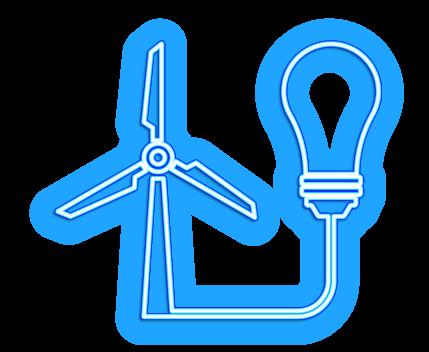


market changes quickly. By continuously evaluating and incorporating the latest advancements into solutions, organisations can benefit from cutting-edge technology that optimises their energy infrastructure and contributes to achieving net zero goals.”
Automation innovations in the energy industry

While there are many innovations happening in the energy sector when it comes to automation, some in particular are having a significant impact. “In analysis with Visual Capitalist, we [Ericsson] saw that a digitally enabled workforce can be up to 8.5% more productive, bring 48% less loss from health and safety incidents and bring 8% reduction in operational spend due to the increased effectiveness,” notes Pey.
Remote monitoring
A cost efficient solution, remote monitoring via drones can “reduce inspection times by 90%, reduce downtime costs caused by manual inspections by 65% and lead to fewer health and safety incidents, resulting in 35% less cost to the organisations,” adds Pey.
Chris Dormer
TITLE: HEAD OF SALES
COMPANY: CAPULA
INDUSTRY: IT SERVICES
LOCATION: UNITED KINGDOM
Augmented reality (AR)
Augmented reality (AR) headsets can increase maintenance efficiency by 33%, increase safety compliance by 70%, and increase productivity by 10%.
Digital twins
A virtual model/simulation connected to the real asset(s) to enable synchronisation of real-time data, digital twins allow businesses to leverage technological advances to solve real-world problems with real-world data, and to enable new digital business models. “It gives way to a host of ways to boost efficiency, including Improved product design and quality through simulation of what-if scenarios and incorporating feedback and improved safety by anticipating and avoiding potential operator mistakes,” says Godemel.
Energy management systems
To keep on top of the rapid and inevitable changes in the energy industry, energy management systems can help those in the industry avoid downtime, and integrate low carbon renewable energy to optimise both cost and environment.
“BY EMBRACING AUTOMATION AND SMART GRIDS, ORGANISATIONS CAN ENHANCE ASSET MANAGEMENT, IMPROVE EFFICIENCY, AND MAKE FASTER, DATA-DRIVEN DECISIONS”
CHRISDORMER HEAD OF SALES, CAPULA
Frederic Godemel

TITLE: EXECUTIVE VICE PRESIDENT FOR POWER SYSTEMS
COMPANY: SCHNEIDER ELECTRIC
INDUSTRY: ELECTRONICS MANUFACTURING

LOCATION: FRANCE
Predictive maintenance
One way to preempt issues is through the use of Predictive Asset Analytics. “When applied in power generation plants for example, the technology uses a proprietary algorithm called OPTiCS that leverages Advanced Pattern Recognition (APR) and machine learning technology. Through this, it learns an asset’s unique operating profile during all loading, ambient and operational process conditions,” explains Godemel.
“Once an issue has been identified, the software can assist in root cause analysis and provide fault diagnostics to help the user understand the reason and significance of the problem. This can provide early warning notification and diagnosis of equipment issues days, weeks or months before failure, reducing operation costs and maintenance. The system is highly scalable and can be used to monitor a single asset, a specific plant or hundreds of remote assets across multiple sites.”

Microgrids

An emerging alternative to boosting direct grid capacity. Microgrids use on-site generation and storage to virtually increase capacity without modifying existing energy supplies. “for example, the US Marine Corps’s air station in Miramar installed a microgrid with Schneider Electric that alleviates load from the local utility, San Diego Gas & Electric, enabling more reliable power for surrounding residents. Increased demand for grid interactivity and a more democratised power grid is driving the uptake of microgrids as businesses look to decarbonise on-site operations, reduce energy costs and boost business resiliency,” says Godemel.

“WHILE REPORTS CLAIM THAT RENEWABLES ARE SET TO MEET ALL GROWTH IN ELECTRICITY DEMAND THIS YEAR, THE REALITY IS THAT THERE’S NO GUARANTEE THAT THIS GREEN ENERGY WILL BE CONSUMED. SIMPLY PUT, THE RENEWABLE ENERGY THAT IS BEING GENERATED CANNOT BE INTEGRATED ONTO THE GRID”
FREDERIC GODEMEL EXECUTIVE VICE PRESIDENT FOR POWER SYSTEMS,, SCHNEIDER ELECTRIC
INTEGRATE EV CHARGING TECHNOLOGIES INTO YOUR WORKPLACE

ChargePoint’s Jaynesh Patel on EV charging as a critical commercial technology and ways in which businesses can leverage it for energy efficiency
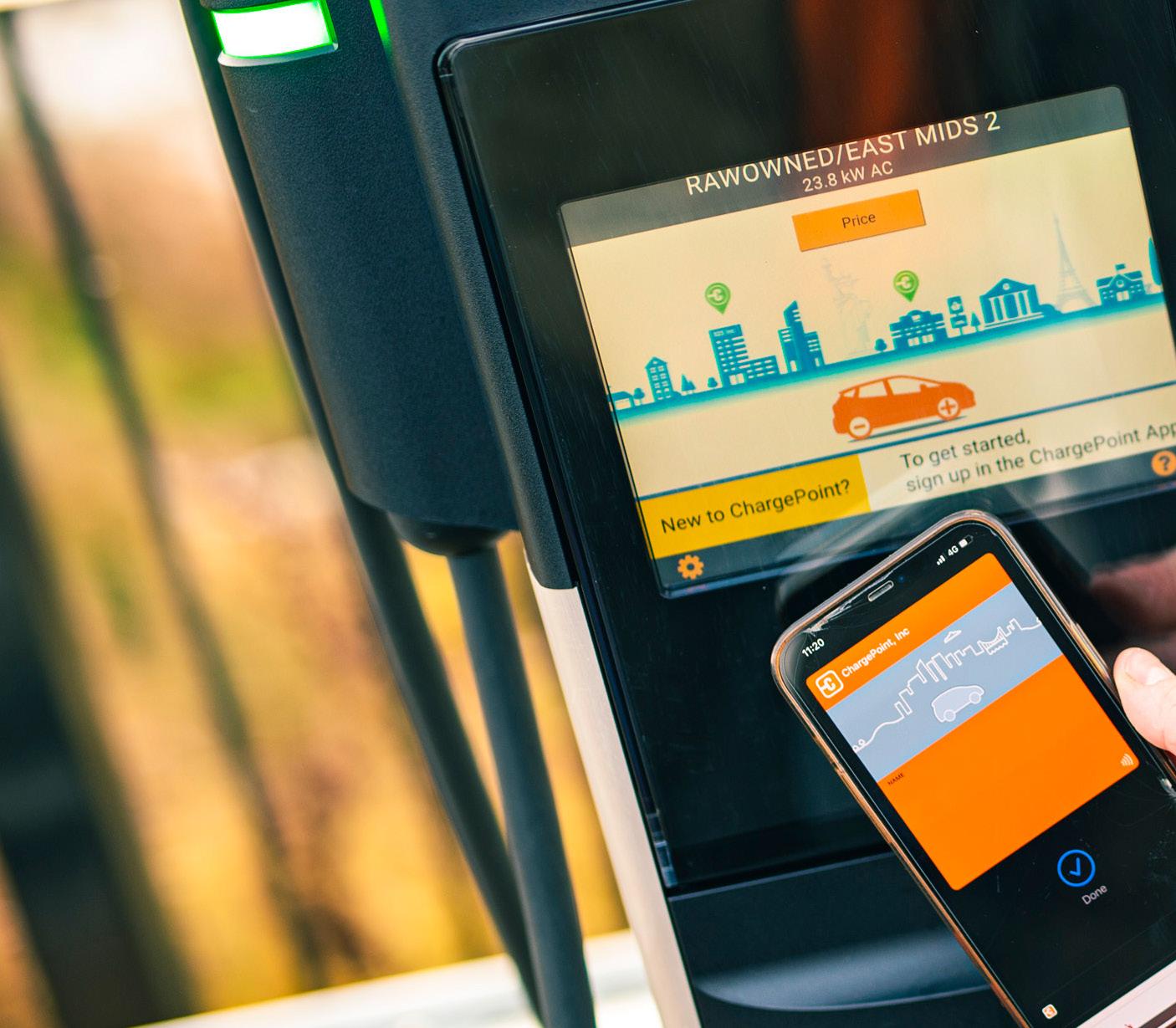 WRITTEN BY: TOM SWALLOW
WRITTEN BY: TOM SWALLOW
The biggest transformation to the energy sector receives further demand from the EV sector, which is putting pressure on networks to provide for a growing number of drivers.


Naturally, this brings us to the charging conversation as many drivers are still unsure whether EVs and the network of public charge points are ready to overtake the historic system of internal combustion engine (ICE) industry already in place. Even industry CEOs are witnessing the problem - Jim Farley, the CEO of Ford being one of them whose road trip led him to uncover charging inadequacy in the US.
It’s safe to say that growth has been far greater than anyone could have anticipated, but what is not to be underestimated is the scale of expansion required to reach decarbonisation deadlines. Technology has an inherent role to play in this and it’s crucial for both businesses and consumers to look at EVs as valuable assets, which is why we turned to an organisation with a foothold in the future - ChargePoint is actioning the energy transition from its own angle and championing EV charging as a major component of business infrastructure.
Speaking with Jaynesh Patel (JP), Senior Policy Manager for UK & Ireland at
Ensuring you have the best partner at your side.


ChargePoint, on this subject, he delves into some of the necessary points that govern business charging decisions and sheds a light on how it integrates EVs into the energy ecosystem.

TS: What makes charging such a vital component of any home or business infrastructure?

JP: With growing environmental pressures and government policies, EVs are going
to become increasingly popular among consumers. Research from BloombergNEF predicted that global passenger EV sales are set to increase by 93% over the next three years, meaning that the demand for EV infrastructure is also likely to soar.
Whether at work or at home, EV users need somewhere to charge their vehicle when it is parked. For an EV driver who doesn’t have access to a charger near their home, charging at work becomes essential. The provision of charging at a retail or hospitality establishment is already a deciding factor for EV drivers, and as their numbers increase it will become a critical factor not only for drivers, but also for these establishments to continue to attract customers.
“IMPLEMENTING A COMPREHENSIVE, NETWORKED CHARGING SOLUTION IS THE BEST WAY TO STREAMLINE OPERATING COSTS”
TS: How have charging technologies evolved?

JP: ChargePoint has been in the charging industry for 16 years, before the first commercial EV was on the road. We have grown to cover all use cases, both in terms of hardware and software, across two continents. Despite incredible growth in the sector, most EV charging still happens where cars spend most of their time, parked at home or work.
This baseline of lower power AC charging will remain key to cost effective EV growth.
“IT’S SAFE TO SAY THAT GROWTH HAS BEEN FAR GREATER THAN ANYONE COULD HAVE ANTICIPATED”
JAYNESH PATEL SENIOR POLICY MANAGER FOR UK & IRELAND, CHARGEPOINT
However for journeys when EV drivers need to drive beyond their EV’s range, or require a quick top-up charge, DC charging will be the solution they seek out. The progression of DC charging speeds has evolved incredibly quickly, with some vehicles now accepting up to 350kWh.
TS: What are the commercial benefits of EV charging in terms of energy consumption?
JP: Implementing a comprehensive, networked charging solution is the best way to streamline operating costs and
set to scale as employee demand for EV charging grows. For commercial firms with large fleets, it gives complete control over station access and pricing, with the ability to set different policies for employees, fleet vehicles, visitors and the public.
Networked charging also allows you to monitor stations remotely and share power among multiple stations without increasing your initial electrical capacity, which helps keep electric bills low. There are also tools for tracking energy usage and GHG emissions reductions - both of which key stakeholders will appreciate.


Jaynesh Patel

TITLE: SENIOR POLICY MANAGER - UK & IRELAND
COMPANY: CHARGEPOINT
INDUSTRY: EV CHARGING
LOCATION: UNITED KINGDOM
Having worked with the UK Government’s cabinet office, Jaynesh advises on a number of electric vehicle related policy strategies, driving implications for commercial EV users.

TS: How does EV charging integrate with the wider infrastructure to become smarter?
JP: ChargePoint’s charging technology is already smart, able to distribute power dependent on a wide range of inputs, such as time of day (cost & capacity), fleet planning and routing demands (through fleet management integrations) and type of user (employee, member of the public etc).
There are also a wide variety of solutions being integrated into the wider network, such as stationary storage and local renewable sources, which can be combined with smart charging to help further reduce infrastructure costs related to grid connection and electricity procurement costs (e.g. by enabling truck fleets to minimise cost by arbitraging price variability throughout the day, taking advantage of vehicle-to-grid opportunities).
THE TOP 100 COMPANIES IN SUSTAINABILITY READ NOW







